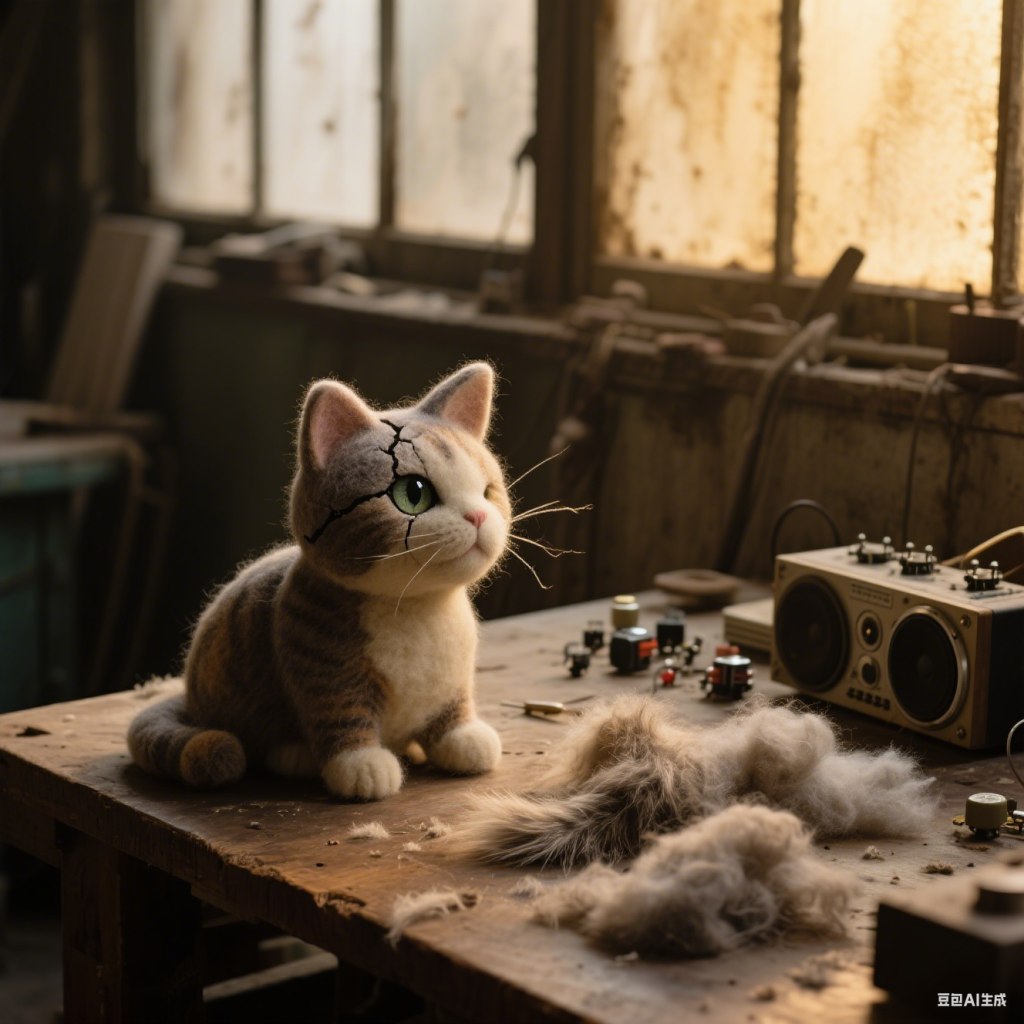Late at night, a post quietly trends on a social platform:
“Who can recreate my dead cat? It has to be exact—even the crack in its pupil.”
The comments quickly split into factions—
“This is morbid. Just let go.”
“What’s the big deal? I spent $30K cloning my dog.”
“Cloning? I trained an AI with its personality—now I can still pet it in VR.”
Beyond the debate, a niche group of artisans silently accepts commissions, crafting “vessels” for the departed—felted wool, clay, even 3D-printed replicas. These aren’t mere keepsakes. They’re 21st-century digital séances, where grief demands a physical ghost.

Rebuilding the Body: From Taxidermy to Genetic Echoes
Traditional taxidermy no longer suffices. Stuffed mounts are too stiff; cloning is too costly. Instead, “soft immortality” thrives in wool sculptures embedded with audio chips, or resin casts mixed with a pet’s actual fur.
One artisan recalls a programmer’s request: a felted cat with its real fur and a pressure-activated meow chip. “It’s not a craft—it’s a cybernetic urn.”
Meanwhile, biotech firms offer “gene legacy” services—splicing a pet’s DNA into microbes or trees. One company engineers “memorial oaks” whose leaves grow with unique biomarkers.
“We’re not selling products. We’re selling the illusion of presence.”
Outsourced Grief: The Proxy Love Economy
Why this obsession with recreating lost pets?
Psychologists point to “transitional objects”—childhood comfort items like stuffed animals. For adults, custom pet replicas serve the same role: they don’t replace the pet; they replace the owner’s need to care.
A client who commissioned a felted cat admits: “It’s not about denying death. It’s about denying absence.” In an era of fragile human bonds, pets offer unconditional love. When they’re gone, grief demands a placeholder—something to touch, to whisper to, to keep the ritual alive.
Ironically, this market thrives on “emotional outsourcing”. Just as we hire cleaners and dog-walkers, we now pay strangers to “grieve for us” through crafts.
The Ethics of Synthetic Afterlives
Not all attempts end well. A viral TikTok documents a woman’s meltdown when her $2,000 hyper-realistic robotic cat malfunctions: “It’s not her! Her purr was softer!”
Critics argue these services exploit vulnerability. Yet artisans counter: “Is it exploitation—or empathy? People have always built shrines. We just use wool instead of stone.”
The darkest fringe? “Black-market pet replicas”, where unscrupulous sellers pass off generic sculptures as “exact matches.” One buyer discovered their “custom” dog was a mass-produced Aliexpress item.
Conclusion: Love, Loss, and the Crafts We Can’t Let Go
In the end, these memorials reveal less about pets—and more about us. We’re a generation that digitizes memories but craves tactile ghosts. We want love to be permanent, portable, and programmable.
Whether it’s wool, clones, or AI avatars, the message is clear: Death is negotiable. And grief? That’s just another customization option.
